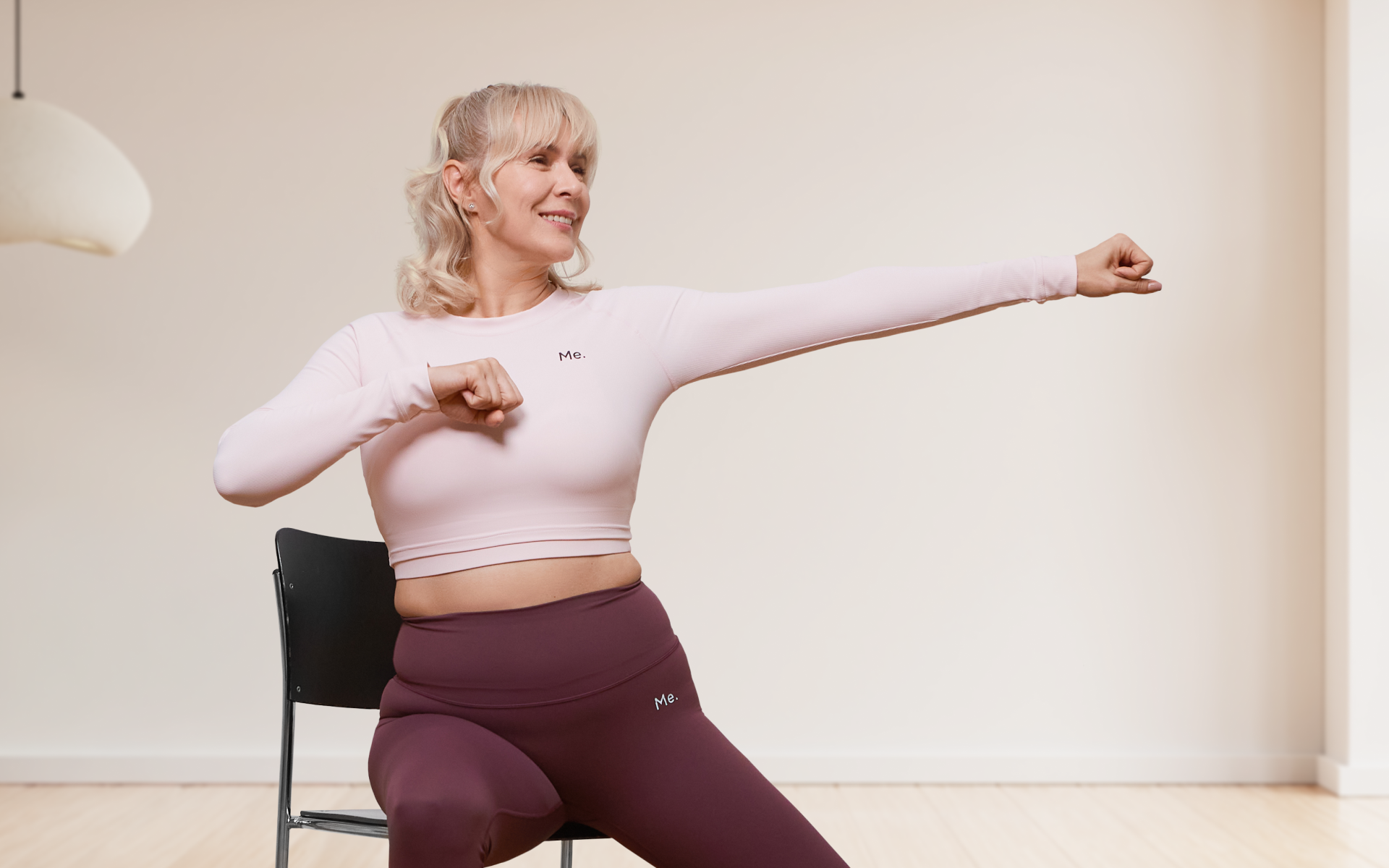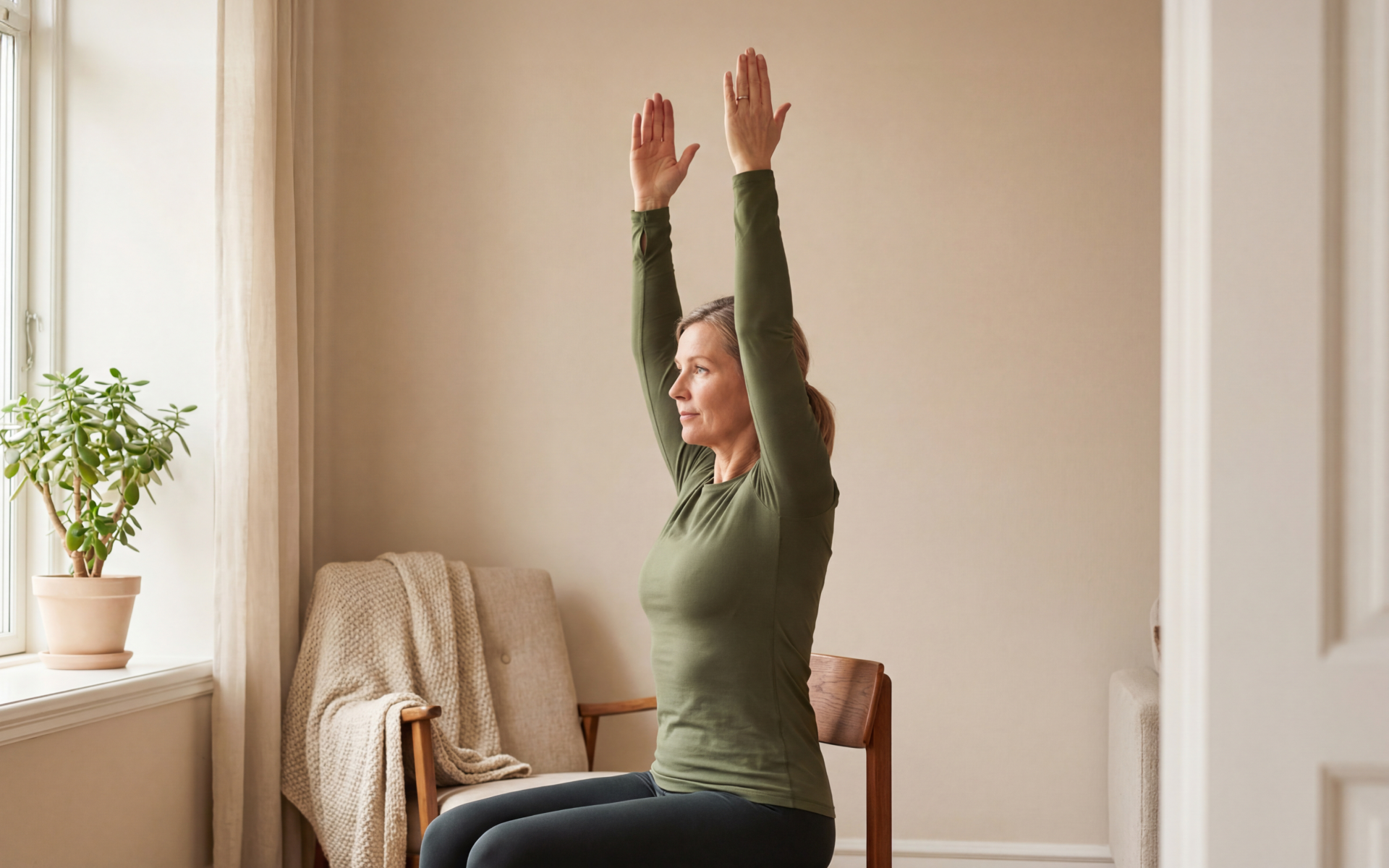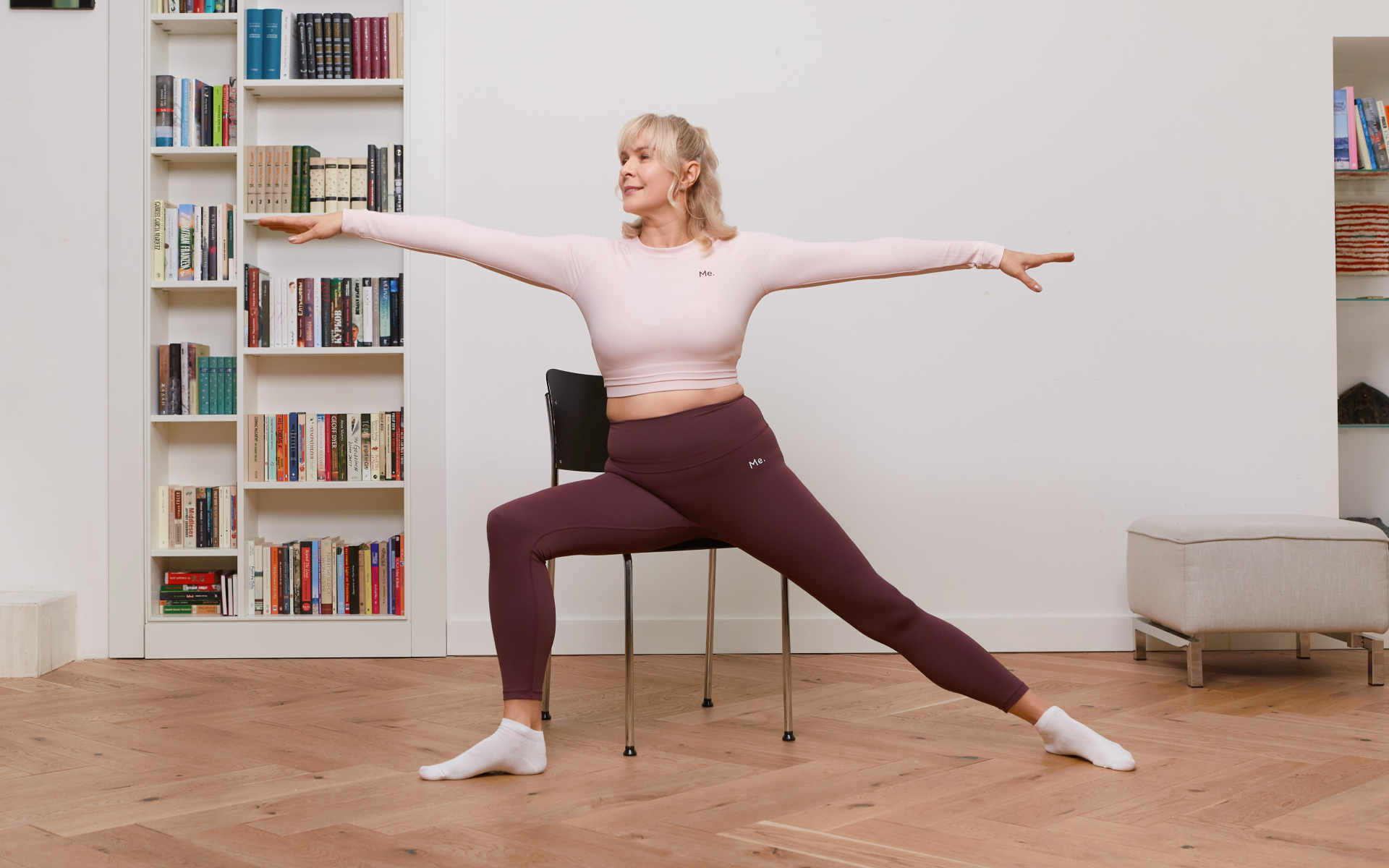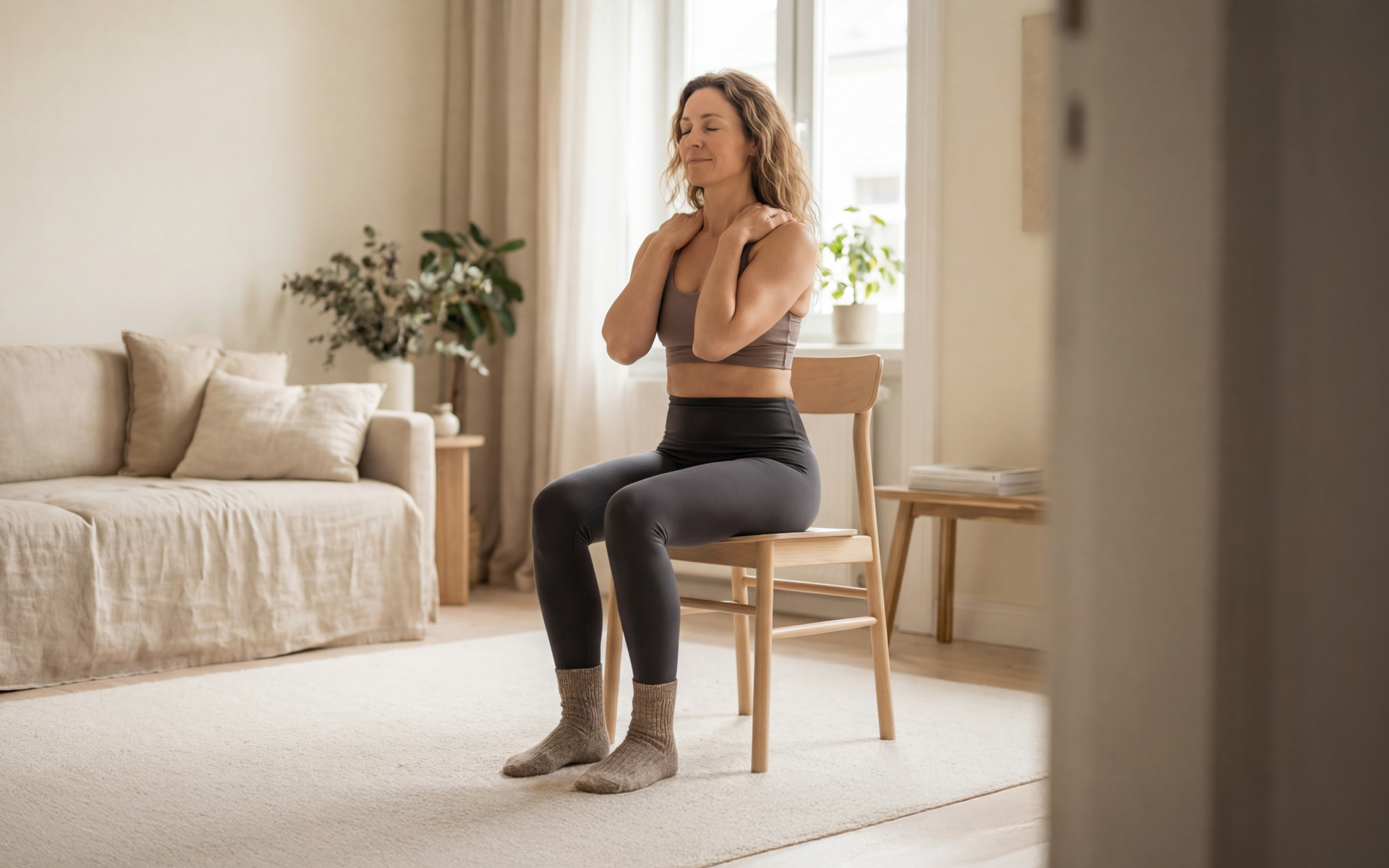Introduction: Understanding Integral Yoga
Sri Swami Satchidananda, a spiritual teacher from India, founded integral yoga in New York City in the mid-1960s. It combines several branches of yoga into a comprehensive practice aimed at achieving physical, mental, and spiritual well-being. Unlike traditional yoga paths that often emphasize a singular focus, integral yoga encourages the practitioner to cultivate a balanced approach in pursuit of a divine life on Earth. Keep reading to learn how to get started.
Core Principles of Integral Yoga
Integral yoga combines six yoga branches, including Hatha, Bhakti, Karma, Raja, Japa, and Jnana yoga, into one comprehensive and holistic practice. It emphasizes discipline, devotion, service, and wisdom to harmonize the body, mind, and spirit(1).
What Is Integral Yoga?
Integral yoga is a system that combines multiple forms of yoga. Sri Swami Satchidananda created it to promote physical, mental, and spiritual well-being by integrating all aspects of life into a single path to spiritual growth(1).
The Philosophy Behind Integral Yoga
The yoga philosophy of integral yoga is the idea that “truth is one, paths are many.” It emphasizes the path to inner peace and spiritual enlightenment through unity and selfless service and encourages practitioners to find their unique journey toward spiritual growth and harmony(2).
The Role of Discipline and Devotion
Discipline and devotion are essential components of integral yoga, which you develop through the Hatha and Raja yoga branches. They help foster physical health, mental control, and ethical living to create a personal connection with the divine. They also help practitioners stay focused on keeping their daily activities in alignment with their spiritual goals.
Benefits of Practicing Integral Yoga
Physical Benefits
Practicing integral yoga improves flexibility, strength, and overall health through Hatha yoga. It also improves bodily functions, and your mind-body connection promotes relaxation and helps you manage chronic conditions(3).
Mental and Emotional Benefits
Integral yoga can help with stress relief, promoting emotional balance and mental clarity while reducing anxiety. Regular practice will improve your ability to calm your mind and improve your focus, helping you better prepare to tackle your daily tasks(4).
Spiritual Benefits
Practicing integral yoga will help you create a deeper connection with the divine. Although it’s not a religion, it will help improve your spiritual well-being. It also encourages self-awareness, inner transformation, and the realization of your true self.
Social Benefits
Through the Karma yoga branch of integral yoga, you’ll emphasize selfless service and compassion to help develop positive relationships and a sense of community that can help improve the lives of others.
Integrating Integral Yoga into Daily Life
Basic Practices and Techniques
For an easier entry into integral yoga, start with simple yoga practices such as Hatha yoga, which can help improve your physical well-being, or Pranayama, which teaches breathing techniques to calm the mind. Mindfulness practices such as meditation and mindful breathing can help you be more aware and present in your activities. Gradually add more complex techniques, such as the selflessness taught in Karma yoga and mantra repetition you find in Japa yoga, as you gain experience(2).
Creating a Daily Routine
Establish a consistent yoga routine that includes morning stretching, meditation, and breathing exercises. Set aside time each day for reflection or to study spiritual texts to enhance your knowledge. Start with a few minutes daily and gradually increase the duration by a few minutes each day as it becomes a habit until you reach at least 30 minutes(3).
Combining Yoga with Other Activities
You can combine integral yoga with daily activities by being mindful of your actions, practicing deep breathing during breaks, and using meditation to manage stress. You can also incorporate physical postures into your exercise routines for a more complete workout. For example, you can incorporate mindful breathing during a walk or while exercising.
Adapting Practices for Different Lifestyles
One of the greatest things about integral yoga is that you can adapt it to suit your lifestyle, goals, fitness level, and spiritual journey. Busy individuals may focus on short, effective sessions, while people with more time can get more involved with longer routines. If you have physical limitations, you can concentrate on gentle poses, breathing exercises, and meditation(2).
BetterMe: Health Coaching app helps you achieve your body goals with ease and efficiency by helping to choose proper meal plans and effective workouts. Start using our app and you will see good results in a short time.
Practical Examples and Guides
Sample Yoga Sequences
Morning Energizer
Start with a simple sun salutation, or Surya Namaskar, to warm up your body after a good night’s rest. Follow with poses like warrior I and II to build strength, then end with downward dog and child’s pose for stretching and relaxation.
Evening Relaxation
Start with gentle cat-cow stretches to help you forget the day’s activities before moving into a seated forward bend to stretch out the back. Then, perform a gentle twist on each side before finishing with Savasana for complete relaxation so you can get a good night’s sleep.
Core Strength
To improve your core strength, you can start with a plank pose, transition to a boat pose, and end with a bridge pose. These poses target the rectus abdominis, obliques, hip flexors, glutes, hamstrings, and lower back.
Sample Yoga Poses
Sun Salutation
- Start in a mountain pose with your feet together and your hands together in a praying position.
- Inhale while stretching your arms overhead and arching your back slightly.
- Exhale while bending forward, bringing your hands toward the floor.
- Inhale while straightening your back with your fingertips on your shins.
- Exhale while stepping back into a plank position.
- Lower to Chaturanga in a controlled manner.
- Inhale while moving into the upward-facing dog position, lifting your chest high off the floor and arching your back.
- Exhale into a downward-facing dog, pushing your hips and back up to form an inverted V.
- Inhale as you step forward into a forward bend.
- Exhale as you fold deeply, holding the stretch for a few seconds.
- Return to the starting position. Do 5 full cycles.
Warrior 1
- Start in a mountain pose with your feet together and your hands together in a praying position.
- Step back with your left foot so your leg forms a 45-degree angle.
- Bend your right knee, keeping it over your ankle with your thigh parallel to the ground.
- Inhale as you lift your arms overhead, keeping your palms together.
- Maintain the pose, taking deep breaths.
- Return to the starting position and repeat with the other leg. Complete 5 full cycles.
Warrior 2
- Start in a mountain pose with your feet together and your hands together in a praying position.
- Step back with your left leg and turn your foot out to a 90-degree angle.
- Bend your right knee, keeping it over your ankle with your thigh parallel to the ground.
- Stretch your arms out to the sides until they are parallel to the floor with your palms down.
- Look over your right hand, keeping your shoulders relaxed.
- Maintain the pose, taking deep breaths.
- Return to the starting position and repeat with the other leg. Try to do 5 full cycles.
Child’s Pose
- Start this pose on your knees, sitting back on your ankles with your big toes touching.
- Extend your arms forward, and as you exhale, fold forward.
- Rest your head on the mat with a relaxed neck and shoulders.
- Hold the pose for 3-5 full breaths, taking slow, deep breaths.
Cat-Cow Stretches
- Start on all fours, with your wrists directly under your shoulders.
- Exhale as you round your spine toward the ceiling, tucking your chin to your chest and drawing your belly toward your spine to get into the cat pose.
- Inhale as you arch your back and let your belly drop while lifting your head and tailbone toward the ceiling to get into the cow pose. Repeat for 10-15 rounds.
Boat Pose
- Start seated on a mat with your feet extended.
- Bend your knees and lift your feet off the ground, bringing your shins parallel to the floor.
- Stretch your arms forward, parallel to the ground. Hold the position for 3-5 full breaths, maintaining balance, keeping your spine straight, and engaging your core.
Meditation and Breathing Exercises
Integral yoga isn’t all about posing and stretching. It also helps you develop your meditation techniques. Practice mindful breathing with Anulom Vilom, an alternate nostril breathing technique that calms the mind to make meditation possible. When you’re meditating, try focusing on a single point as taught in Trataka or repeating a mantra for 5-10 minutes daily to cultivate inner peace and reduce anxiety.
Using Props and Modifications
You can use a yoga block or strap to help with poses such as forward fold or seated forward bend if you have limited flexibility(5).
- Placing yoga blocks under your hands in poses such as downward dog or half moon can help reduce muscle strain and improve your alignment.
- A yoga strap can help with poses such as seated forward bend by helping you reach your feet, which allows you to get a deeper stretch without compromising form.
- Place a bolster pillow under your hips in bridge pose for support, or use it in Savasana to improve comfort and help you relax.
Reasons why BetterMe is a safe bet: a wide range of calorie-blasting workouts, finger-licking recipes, 24/7 support, challenges that’ll keep you on your best game, and that just scratches the surface! Start using our app and watch the magic happen.
Common Challenges and How to Overcome Them
Staying Motivated
As with any workout, one of the biggest challenges can be staying motivated to stick with the program until you achieve your goals. Set small achievable goals and track your progress while continuously reminding yourself of the benefits of sticking with the program. Joining an integrated yoga community or practicing with friends can help keep your sessions fun and boost motivation.
Dealing with Physical Limitations
Physical limitations may make some poses difficult to perform. Props such as blocks or straps can help make them more accessible. You can also focus on gentler practices such as meditation and Pranayama if you need to. Always listen to your body and avoid pushing too hard to reduce the risk of injury(6).
Managing Time and Commitment
Balancing yoga with daily responsibilities can be difficult. Schedule short sessions and find ways to integrate yoga into your routine. Most importantly, be flexible, as things rarely go as planned, but stay as consistent as possible to reach your goals quickly.
- Identify the most important parts of your practice and focus on them. Even a few minutes a day can be helpful and this is better than no time at all.
- Treat your yoga practice as you would any other appointment. Set aside time each day for yoga and stick to it.
- If your schedule changes, adjust your routine. Shorter, more frequent sessions can be just as effective as longer ones.
- Integrate yoga with other daily tasks, such as mindful breathing during breaks or stretching while watching TV.
- Consistency is more important than duration. Even 10-15 minutes daily can make a significant difference over time.
FAQs
What’s the best way to start practicing integral yoga?
Start with basic yoga practices, such as Hatha yoga for physical postures, Pranayama for breath control, and short meditation sessions. Joining a beginner’s integral yoga class can also be a great way to start learning and keep it fun. Researching online to learn about other people’s experiences, find ways to improve your meditation techniques, and learn new exercises can also be rewarding(2).
Can anyone practice integral yoga regardless of age or fitness level?
Integral yoga is adaptable for all ages and fitness levels. You can adapt it to overcome physical limitations with props and modifications that help make it more accessible.
How does integral yoga differ from other forms of yoga?
Integral yoga integrates multiple yoga paths, which helps you develop a more comprehensive program that can address your physical, mental, and spiritual well-being. Other forms of yoga are more limited in scope, focusing on a particular goal.
What should I expect from an integral yoga class?
An integral yoga class takes a balanced approach, focusing on physical postures, breathing exercises, meditation, and relaxation. It often concludes with a focus on mindfulness and spiritual growth(2).
How often should I practice integral yoga?
Integral yoga practiced 3-5 times a week, even for short sessions, can be incredibly effective in promoting overall well-being. Consistency will establish a routine that will put your goals within reach(3).
The Bottom Line
Integral yoga is a holistic approach to yoga that combines several branches into one system. It integrates physical postures, meditation, and mindfulness to promote physical health, emotional balance, and spiritual growth. Start with basic practices such as Hatha yoga and Pranayama and gradually build a yoga routine that fits your lifestyle. Progress at your own pace, but practice daily to get into a routine for lasting benefits.
DISCLAIMER:
This article is intended for general informational purposes only and does not serve to address individual circumstances. It is not a substitute for professional advice or help and should not be relied on for making any kind of decision-making. Any action taken as a direct or indirect result of the information in this article is entirely at your own risk and is your sole responsibility.
BetterMe, its content staff, and its medical advisors accept no responsibility for inaccuracies, errors, misstatements, inconsistencies, or omissions and specifically disclaim any liability, loss or risk, personal, professional or otherwise, which may be incurred as a consequence, directly or indirectly, of the use and/or application of any content.
You should always seek the advice of your physician or other qualified health provider with any questions you may have regarding a medical condition or your specific situation. Never disregard professional medical advice or delay seeking it because of BetterMe content. If you suspect or think you may have a medical emergency, call your doctor.
SOURCES
- History | Integral Yoga Institute – New York (iyiny.org, 2022)
- Integral Yoga Teachings (integralyoga.org, 2024)
- Mayo Clinic Minute: Benefits of yoga (newsnetwork.mayoclinic.org, 2017)
- Yoga for better mental health (health.harvard.edu, 2024)
- The best yoga props: Mats, bolster pillows, blocks and more (nbcnews.com, 2024)
- Injuries or Physical Limitations? You Can Still Practice Yoga (yogauonline, 2024)











